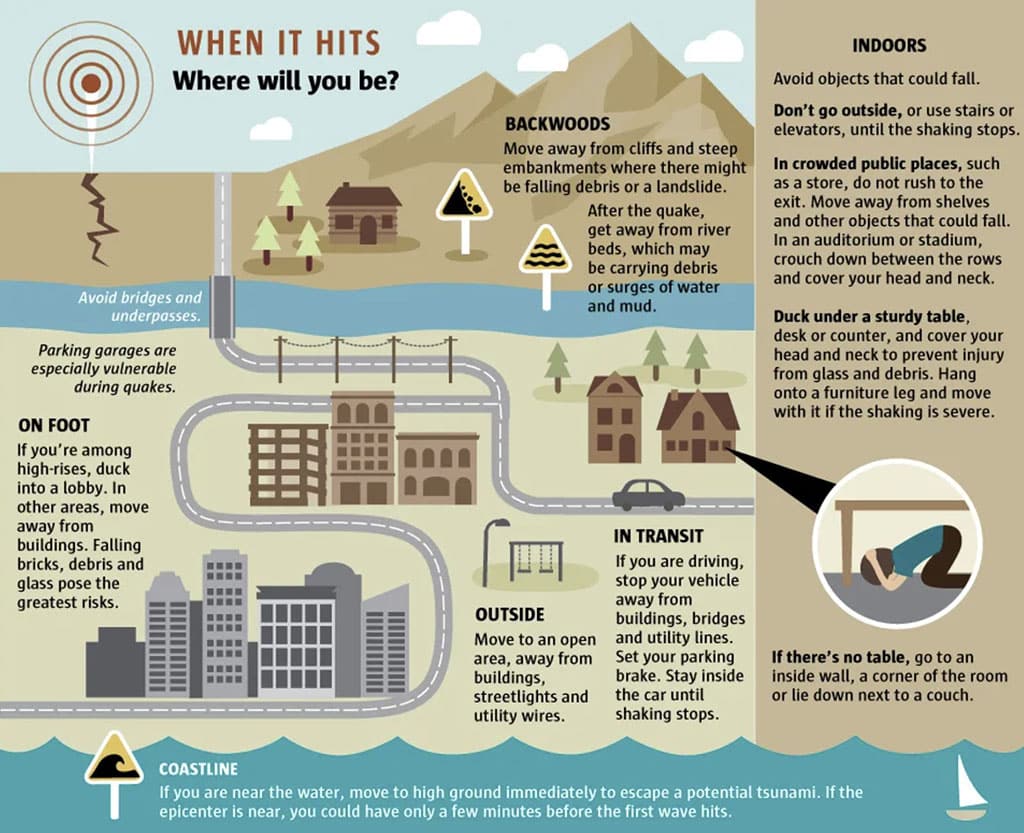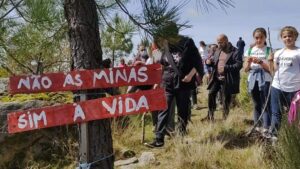The earthquake that occurred in Portugal in the early hours of Monday, August 25 was the 10th largest since the 16th century and was followed by nine aftershocks, which were not felt and of small magnitude, according to the Portuguese Institute of the Sea and Atmosphere (IPMA).
The earthquake, measuring 5.3 on the Richter scale, was recorded at 5.11am on Monday at the mainland’s Seismic Network stations, with its epicentre around 60 kilometres west of Sines.
Through the online macro-seismic questionnaire, more than 19,000 testimonies referring to the effects of this earthquake have already been received at IPMA.
“In terms of magnitude and considering an area with a radius of 100 kilometres around the epicentre, this is the 10th largest earthquake to have occurred since the 16th century, with this area being very marked by the occurrence, in 1858, of a particularly important historical earthquake, known as the Setúbal earthquake, which had a magnitude of M7.1”.
If the epicentre had been closer to the mainland and/or of greater intensity, what would the effects have been?
Since 1755
Could a 7+/8+ magnitude earthquake occur in Lisbon and southwestern Portugal in the future? If it occurs, how devastating could its impact be? Is Portugal prepared for a repeat of the 7.7–9.0 magnitude 1755 Lisbon earthquake?
The short answer is that Lisbon, and Portugal as a whole, are far more prepared for such an event today than they were in 1755. As a result, despite the larger population today, there would most likely be a much smaller impact both in terms of damage to buildings, as well as loss of human life. In fact, Lisbon was already much more prepared for a large earthquake in the decades that followed that event.
In the aftermath of the 1755 earthquake, led by the Marquês de Pombal, scientific methodology was applied to study the effects of the earthquake throughout the country. Questionnaires were sent out by local authorities throughout the land to document the extent and type of damage, in order to understand the strength of the vibrations at different points and distances. Arguably this was the birth of the modern science of seismology.
Scientific methodology was also applied to develop new construction practices in order to minimize the impact of future earthquakes. Scale models of buildings were built and subjected to strong vibrations by having soldiers march around them on wooden platforms to determine which designs would best resist another strong earthquake.
The new designs thus developed involved using internal building “cages” made of heavy wooden beams, including diagonal members for extra strength and flexibility to resist sideways forces. This is similar to the seismic steel reinforcement used today in glass-and-steel buildings in seismically-active zones around the world, and is probably the first example of methodical incorporation of seismic resistance into building standards in the West, if not in the world. (Source: Tony Nunes)
In modern Portugal, seismic reinforcement is also mandatory for new buildings, usually achieved with “re-bar” reinforcement for masonry (stone and/or concrete) construction. Older masonry buildings are also retrofitted with seismic reinforcement when being renovated, etc.
The end result of all this is that Portugal would no doubt suffer much less damage today than it did in 1755 were another similar earthquake to occur. Many buildings may look like very ancient construction, but the situation is not the same. Even in 1755 the damage was not universal: the Alfama district of Lisbon, built on a rocky hill steps from the devastated lower town, was relatively unscathed, including the famous castle of São Jorge that oversees the city and the cathedral.
Much was learned from the 1755 event and concrete steps were taken to prevent such devastation happening in the future.
Additionally, today there are modern systems of monitoring and public warning systems in place which will help direct people when seismic activity threatens, and these will also help reduce human casualties.
It should also be noted that the worst devastation in 1755, especially in Lisbon, was not simply due to the shaking of the earth and toppling buildings, but also a tsunami that inundated the lower town near the River Tagus where people had gathered to flee the damaged buildings, and a massive fire that occurred due to burning candles being toppled and setting alight cloth fabrics, furniture, etc.
Modern systems of communication and lighting would have minimized the costs of both of these after-effects of the earthquake.
More recently in February 28, 1969, the inhabitants of Lisbon and the Algarve woke up at 3.41am with an earthquake measuring 7.9 on the Richter scale. But it was the Algarve region that was most affected, as it was the closest to the epicentre, 180 km southwest of Sagres, but the tremble was felt in the north of the country. It was also felt in Madeira, Spain, Morocco and France and even caused a small tsunami.
The damage occurred mainly in the Algarve, mainly in the towns of Vila do Bispo, Bensafrim, Portimão and Castro Marim. The earthquake generated alarm and panic among the population, with cuts in telecommunications and electricity supply and resulted in 13 deaths.
Earthquake insurance
The Portuguese Insurance Association, representing its member insurance companies, following the recent earthquake, emphasised that it is necessary to create a protection system for catastrophic risk that protects people and their homes.
This is not just uncertainty, but a real risk, certain to occur at an uncertain time.
In Portugal, 47% of homes have no insurance whatsoever, 34% have fire or multi-risk insurance, but no seismic risk coverage, and only 19% have insurance with seismic risk coverage.
There is, therefore, a long way to go before the insured housing stock has the minimum level of protection against this type of event. One of the reasons that properties with seismic risk coverage is low is because most insurance companies will not insure properties over a certain age, and even if they do, premiums have risen considerably over the last year.
We live in an earthquake zone, and it is important that everyone is aware of the risk and what to do should an earthquake occur. Safe Communities Portugal website has all the details.
By David Thomas
|| features@algarveresident.com
David Thomas is a former Assistant Commissioner of the Hong Kong Police, consultant to INTERPOL and the United Nations Office on Drugs and Crime.
In 2011, he founded Safe Communities Algarve to help the authorities and the community prevent crime. It is now registered as Associação SCP Safe Communities Portugal, the first national association of its type in Portugal.
913 045 093
info@safecommunitiesalgarve.com
www.safecommunitiesportugal.com

























